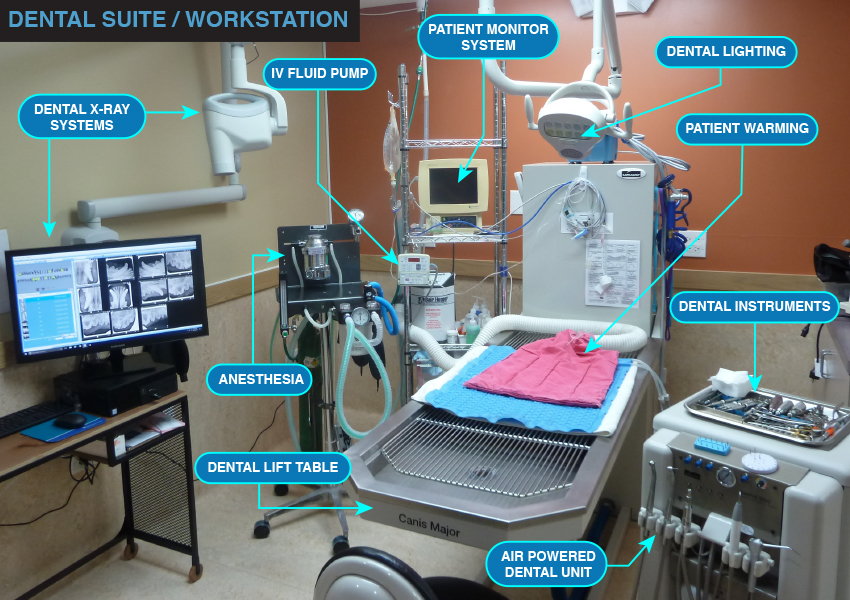Keys to Safe Anesthesia

Here’s a peek “behind the scenes” of a professional teeth cleaning, oral assessment and treatment procedure:
-
Pre-anesthetic feeding
- At or before 9:00 pm the night before the cleaning, your pet’s food must be taken up. Water may be left available until you leave home in the morning.
-
Admission & Check-in
- Plan to arrive between 7:30 and 8:30 am. Bring a list of any medications your pet is taking and we will complete our short pre-anesthesia consent form.
-
Keys to safe anesthesia
- Pre-anesthesia examination and bloodwork are performed to ensure your pet is healthy and has no underlying health problems that might prohibit anesthesia.
- Each patient receives an individualized anesthetic protocol. Pets with heart, kidney, liver conditions as well as diabetes can be safely anesthetized.
- Intravenous catheter will be used to administer anesthetics and fluids throughout the dental procedure to ensure safety and to support your pet’s blood pressure.
- Premedication and/or sedative is used to calm your pet and improve anesthetic safety.
- Anesthesia is initiated with a safe, short-acting induction agent followed by gas anesthesia, administered with oxygen to maximize your pet’s safety and speed of recovery.
- Advanced patient monitoring is used on every pet. This will include blood pressure, EKG, and respiratory monitor as well as an experienced technician assigned to the case. These parameters are recorded on an IPad Anesthetic Chart to identify trends.
- Patient Warming System is used and the patient temperature is constantly monitored.
- Dental nerve blocks (if needed) are used for pets requiring oral surgery. These blocks will reduce pain, reduce the amount of anesthetic used and reduce postoperative pain.
-
Procedure
- Dental probing and charting are performed. Missing teeth, fractured teeth, gum disease, cavities, or other lesions are noted on the dental chart.
- Ultrasonic scaling followed by polishing is performed.
- Dental x-rays: AAHA Guidelines recommend full mouth dental x-rays for all feline and canine patients. Studies show that 42% of cats and 28% of dogs have dental disease that can only be detected by dental x-ray. x-rays allow us to treat all dental disease present rather than having conditions under the gumline go undetected, worsen, cause pain, or tooth loss.
- Therapy as needed: Gum surgery, root scaling, bone grafting, tooth extractions, or oral surgery may be performed to relieve pain and restore oral health. Root canal therapy, oral tumor biopsy, restorative therapy, even orthodontic therapy is often performed.
-
Dismissal
- Your pet is discharged between 3:30 and 6:00 p.m. by appointment
- We will share digital photos/x-rays of your pet’s teeth before and after will detail your pet’s oral health, show the treatment he/she received and direct your efforts on future home dental care.
- Dismissal document will be presented by a technician with instructions on feeding, medication(s), restrictions and any follow-up examinations if needed.

